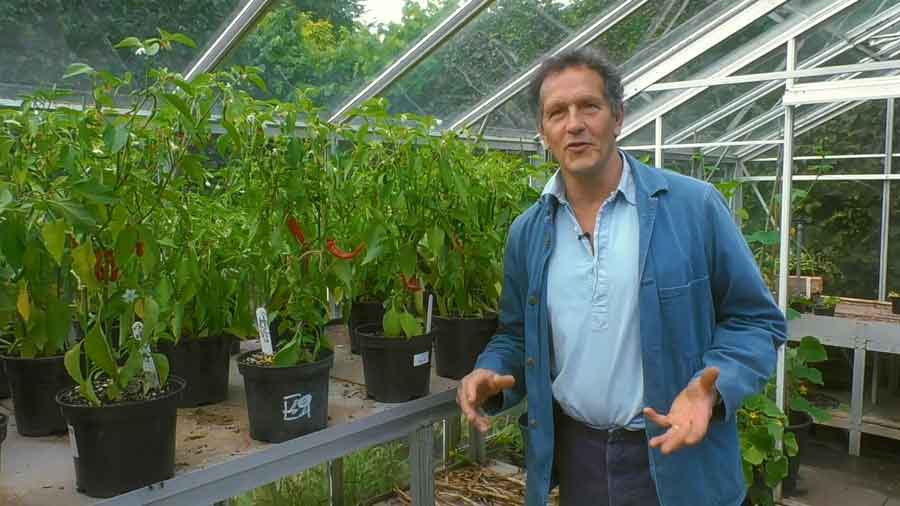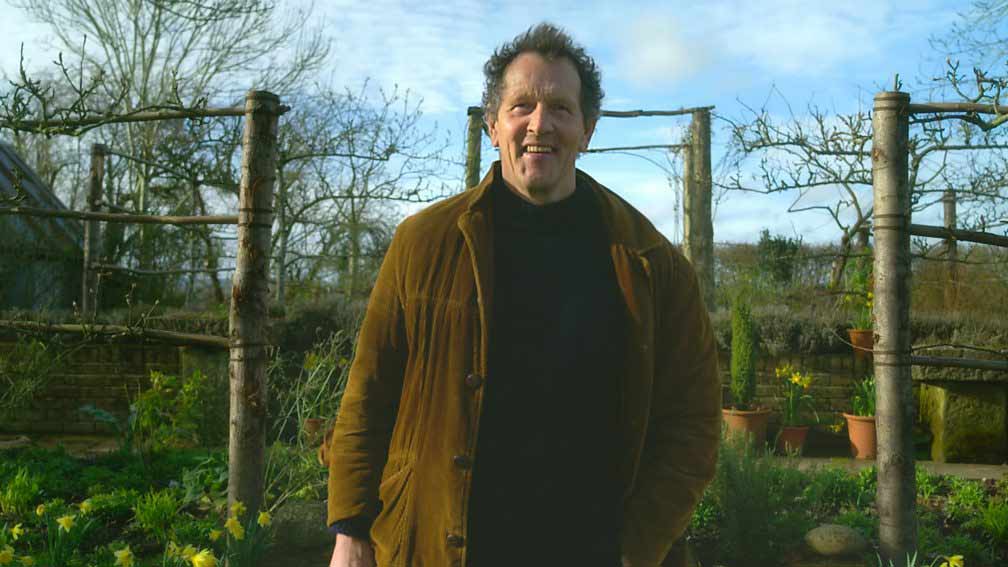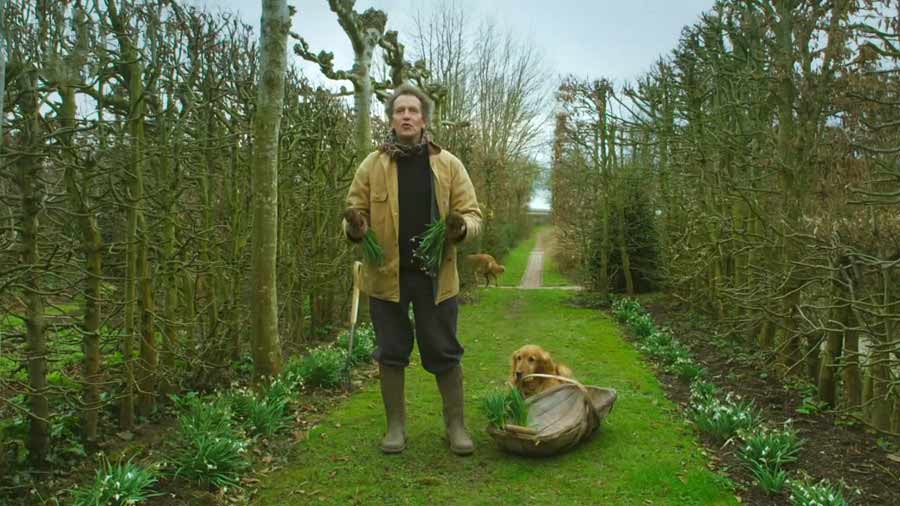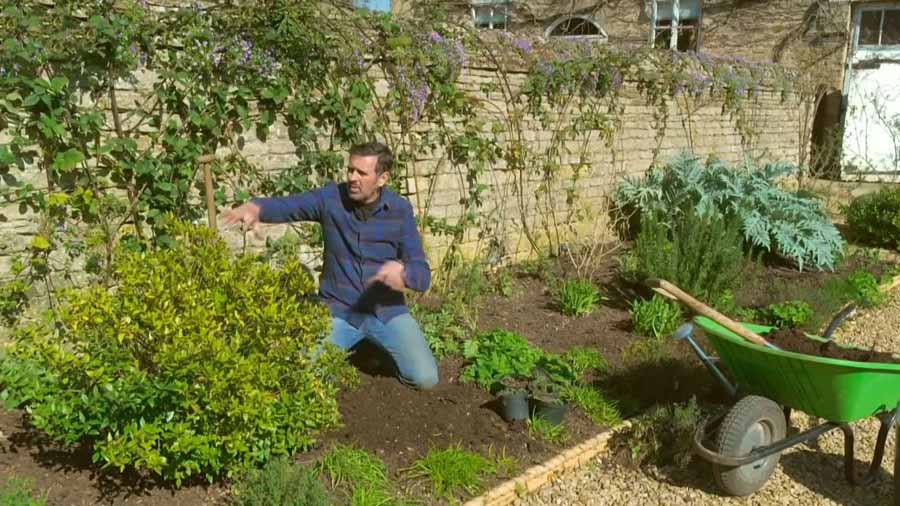Gardeners World episode 20 2020: At Longmeadow, Monty refreshes a container of overgrown herbs, plants alpines in a pot and revisits the shrub and perennial cuttings he took a few weeks ago.
Arit Anderson travels to Kent to meet a designer who is placing sustainability and the environment at the heart of the gardens she designs, and the team discover a garden in Dorset that has been laid out specifically with scent in mind.
There is a look back to 2019 as Frances Tophill visits an allotment on the Isle of Man, meeting a grower who uses plants to make cosmetics, and on the Isle of Wight, there is a second chance to meet an enthusiast who has filled his garden with daylilies. And there are more viewers’ videos showing what people have been getting up to in their own gardens.
Gardeners World episode 20 2020
Lilies in pots
Lilies grow well in containers, where they can be positioned for maximum effect in the garden. It’s a great way to grow these stunning plants, especially if you can’t grow them in your garden. Ideally plant in early autumn, although bulbs can be planted until spring.
Lilies can also be forced into flower for an indoor display. Bulbs commonly sold for forcing include Asiatic hybrids, L. auratum, L. longiflorum and L.speciosum. These bulbs will have been kept in a cool environment in order to flower without natural winter chill being necessary. Forcing involves bringing the pot into the warmth of the house or heated greenhouse, for flowering around six weeks after planting.
Place a 5cm (2in) layer of drainage material, such as crocks or small stones, in the base of clay pots before beginning to fill with potting compost. Plastic containers may not need this ‘crocking’ if their drainage holes are raised off the bottom of the container.
Although any good multipurpose compost is suitable, soil-based John Innes composts are easier to manage in terms of watering and feeding. John Innes No 3 is recommended for most lilies. If it appears too dense, add 20 per cent by volume each of horticultural grit and ericaceous soil-less compost or leaf mould.
Grow your own carrots
Carrots come in shapes and colours other than long and orange – look out for round carrots, as well as unusual colours such as red, yellow and even purple. They can be grown in containers if you are short on space, or your soil is stony or heavy clay. Sow regularly for prolonged cropping.They freeze and store well too, but like most vegetables, taste best freshly picked from the garden.
Carrots require an open, sunny site and fertile well-drained soil. If your soil is stony, shallow or heavy clay, you may end up with stunted or forked carrots, so try short-rooted types. These also suit containers.
Early cultivars can be sown in February or March under cloches or with similar protection. The main outdoor sowing season is from April to early July. Seed packets will state whether the cultivar is an early or maincrop type. Sow 1cm (½in) deep in rows 15cm-30cm (6-12in) apart. By sowing thinly you can avoid thinning out. Aim for plants 5-7.5cm (2-3in) apart. Thin if needed at the seedling stage.
How to grow cabbages
Cabbages come in different shapes, sizes and colours, and with a little planning it’s possible to pick them fresh nearly every day of the year. They can be used raw in salad or coleslaw, and as ingredients in soup, boiled, steamed or braised. Different types can be harvested throughout the year.
Cabbages need a sunny site and firm soil. Wherever possible, prepare the soil in autumn by adding well-rotted manure or garden compost and then leave it over winter to consolidate. Before planting cabbages, make sure the soil is well firmed by shuffling along the surface on your heels, then rake it flat.
You should not grow cabbages in the same soil that you grew them (or other brassicas) the previous year. Cabbages are best suited for growing in the open ground, but you could grow one or two in large, deep containers. They are not suitable for growing bags.
Peppers and chillies
Sweet peppers and chillies can be grown in pots on a sunny, warm patio in a similar way to tomatoes, but will produce a better crop when grown in a greenhouse or conservatory. Chillies and peppers are green when young, maturing to a variety of colours and flavour varying from mild to extremely hot.
Peppers and chillies need a warm, sunny sheltered position and, therefore, are only suitable for outdoor cultivation in milder parts of the country, and benefit greatly from cloche or even fleece protection. They can be grown in frames, unheated polythene tunnels or greenhouses and are also suitable for growing in containers or grow bags filled with multipurpose compost.
They require well-drained and fertile, moisture-retentive soil, which is slightly acid. To achieve this, incorporate moderate amounts of well-rotted manure (5.4kg per sq m/10lb per sq yd) into the soil, but avoid using fresh manure or large quantities, as this may lead to lush, leafy growth at the expense of fruit.
Gardening with alpines – Gardeners World episode 20 2020

Create a miniature alpine landscape with year-round interest. Planting into sinks and troughs raised off ground level lets you admire these often brightly coloured jewels close at hand. Planting alpines and rock plants into sinks and troughs is a perfect way to provide the well-drained soil conditions and open sunny position they need to thrive. You have the opportunity to enjoy flower and foliage throughout the year.
Stone sinks are traditional for planting into, but it is quite acceptable to ‘make’ the stonework yourself and apply it to any rigid container such as an old glazed sink or even a polystyrene fish box.
Grow your own garlic
Not only has the use of garlic in the kitchen increased dramatically in recent years but also the number of gardeners producing their own crop. Garlic is a rewarding, easy-to-grow crop as long as it is grown on well-drained soils.
Choose an open, sunny site and well-drained soil. High humidity around the foliage and wet soils make the crop more prone to disease, particularly if planted in the autumn. Garlic does not thrive on acid soils (below pH 6.5). Reduce acidity by applying lime in autumn and winter.
Prior to planting, improve the soil’s structure, moisture retention and nutrient levels by incorporating organic matter. Apply about two bucketfuls of well-rotted manure or other organic matter such as garden compost every square metre (yard). Avoid using fresh manure.
Marjoram
Marjorams are generally used fresh, unlike their close relation oregano, whose leaves are more likely to be dried and stored. Most marjorams also have a more delicate flavour. Leaves and flowering sprigs are popular in Greek and Italian meat dishes, soups, stuffings, tomato sauces and pasta, where they are best used towards the end of the cooking process. Leaves are used to flavour oil and vinegar.
You can buy ready-grown plants from garden centres or start plants from seed. Sow seed indoors from February to May. Fill a small pot with seed compost and sow a few seeds on the surface. Cover with a light layer of sieved compost, water and place in a propagator to germinate. When seedlings are large enough to handle, prick three out into an 8cm (3in) pot of multi-purpose compost.
Grow indoors until early summer or until all danger of frost has passed, then plant in a sunny, sheltered spot in well-drained soil, or in a container.




